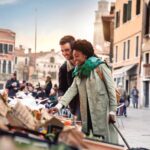
Discover the World, one Full Adventure at a Time!
Our Contacts
Address
51 Phan Boi Chau - Hoan Kiem District
Vietnam
contact@lalumieretravel.com
Phone
Travel Agency +1 473 483 384
Info Insurance +1 395 393 595

Discover the World, one Full Adventure at a Time!






51 Phan Boi Chau - Hoan Kiem District
Vietnam
contact@lalumieretravel.com
Travel Agency +1 473 483 384
Info Insurance +1 395 393 595